Robert Burns (1759-1796) is widely considered to be Scotland’s national bard. His poetry celebrates aspects of farm life, traditional culture, class distinctions, and religious practice (alongside an infamous love for the lasses and the drink).
Burns Night is celebrated around the world each year on his birthday (25th January). Let’s join in these celebrations by taking a look at some books related to Burns in the NAL Collections…
Growing up in a rural community in the west of Scotland, his poetry was influenced by his agricultural background. In his poem “The death and dying words of poor Mailie, the author’s only pet Yowe (an unco mournfu’ tale)” he displays his sensitivity to nature as he laments his dying ewe. In this 1808 publication, the poem is accompanied by a fine wood engraving by the renowned wood engraver Thomas Bewick.
Poetical works of Robert Burns; with his life. Ornamented with engravings on wood by Mr. Bewick, from original designs by Mr. Thurston. Book, printed Alnwick: W. Davison, 1808. Museum no. 38041800918484. ©Victoria and Albert Museum, London
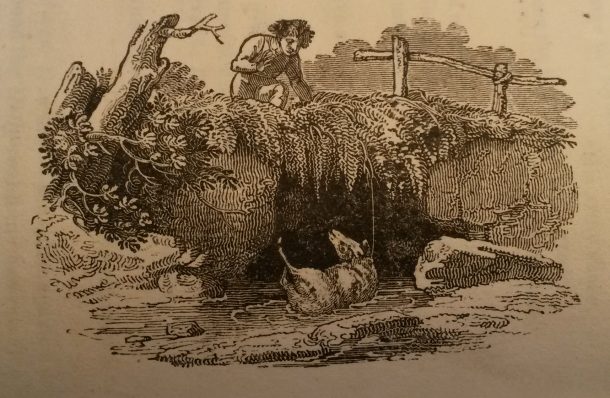
In addition to his appreciation for the natural world, Burns developed a keen sense for the supernatural from listening to dramatic Scottish folk tales as a child. His flair for mixing the supernatural with humour can be found in his “An address to the Deil”. In this poem he addresses the devil in a casual style, presenting him as an almost-comic figure trying to tempt humanity. This 1830 publication of the poem is illustrated with distinctly macabre engravings designed by Thomas Landseer.
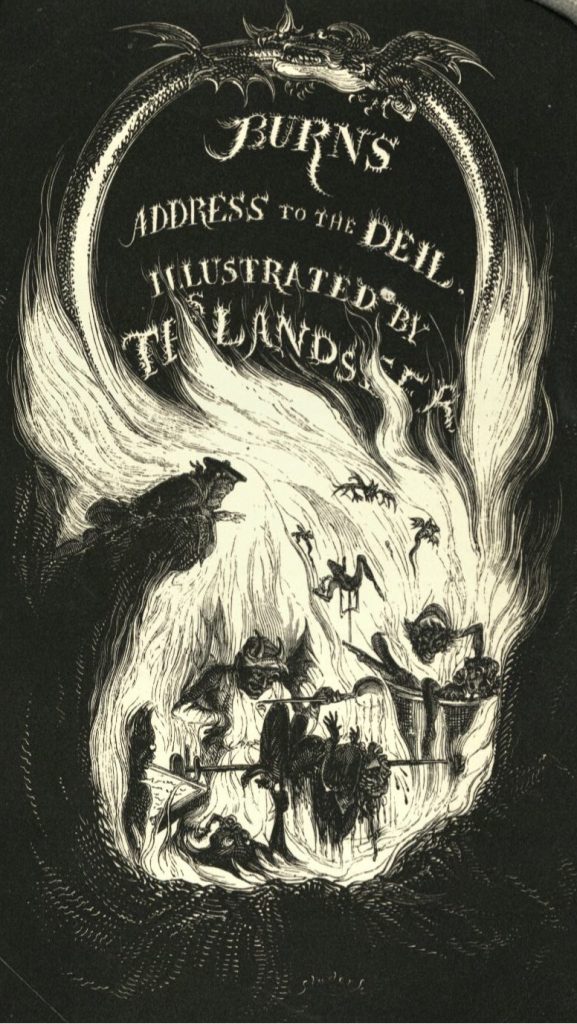
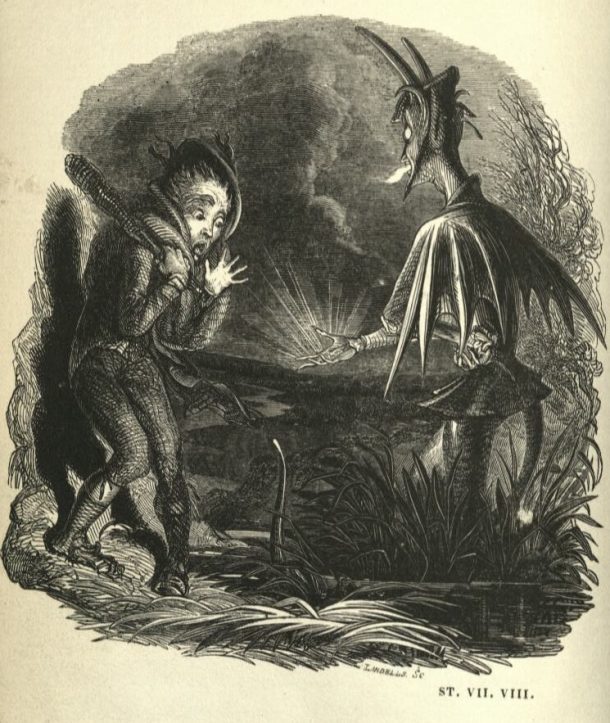
Throughout the 18th and 19th centuries an interest in the wild picturesque British landscape burgeoned amongst the upper classes. Their wealth meant they could take their time to travel around the country at a leisurely pace, hoping to take in a beautiful view or investigate a place of special historical interest. Many books were published to accompany such travellers and the NAL holds two which are aimed specifically at Burns devotees.
In this 1805 publication dedicated to Burns country you can see one of the earliest engravings of Burns’ cottage:
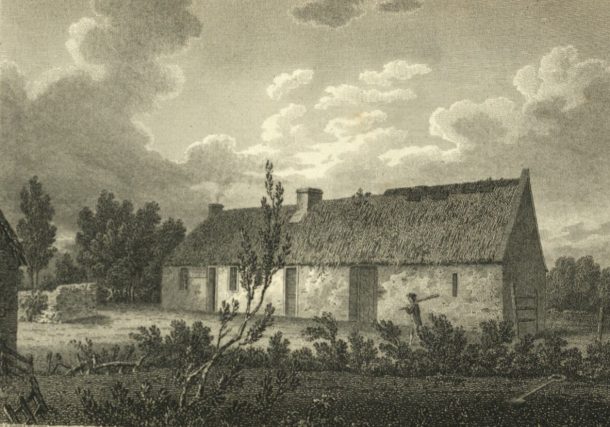
In contrast to this everyday view, here is a depiction of Burns’ cottage as a popular tourist destination:
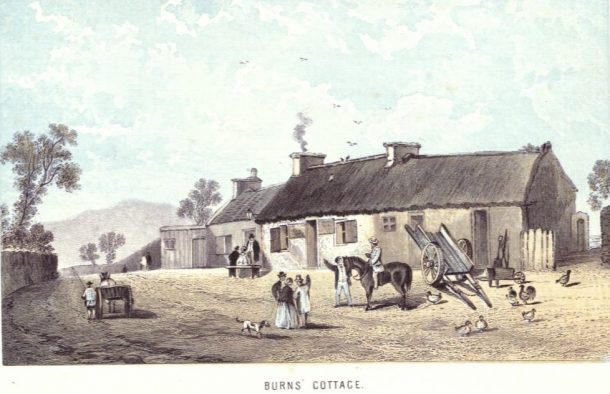
This publication comes with an explanatory text which leaves you in no doubt of Burns’ celebrity: “Here he was born; here he sinned, suffered, and sorrowed; here he wrote most of his poems; here he spent some of the happiest hours of a checkered life; and here stand his birth-place … And truly there is no purer or more refining pleasure than to tread in the footsteps of the “great departed” … It seems to give us a clearer insight into their character, and assists us to a better comprehension of their genius”.
The guide-book also shows this charming image of tourists looking around the interior of the cottage:
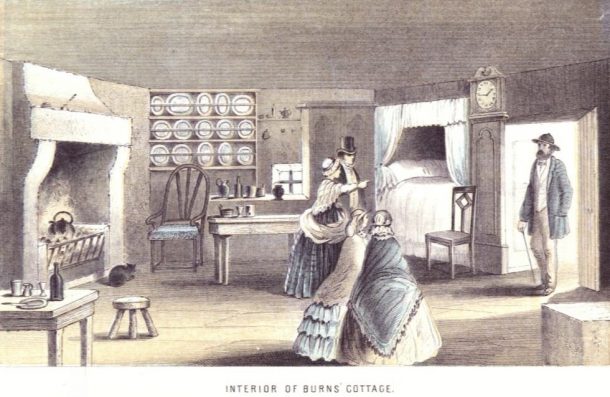
The people depicted in these images appear to be enjoying their poke around the home of the great man, and I’m sure they’d fully approve of the ceremonial haggis-feasting and poetry-reading which honours him every year.
I’ll end with a poem which should mean a lot to anybody who has ever handled historic book collections:
The Book-Worms (1787)
Through and through th’inspir’d leaves,
Ye maggots, make your windings;
But O respect his lordship’s taste,
And spare his golden bindings
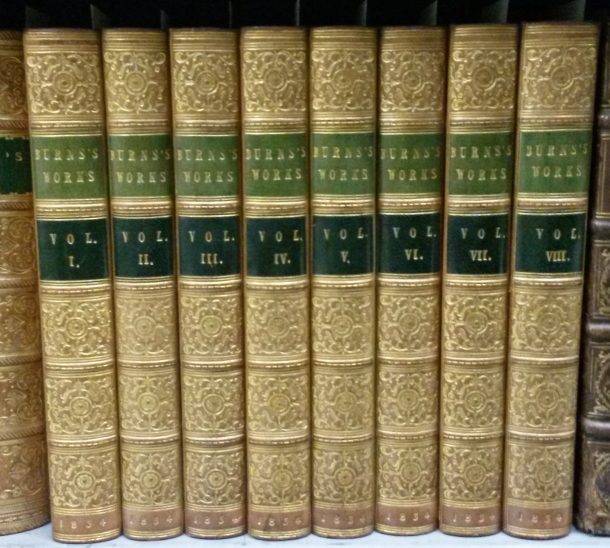
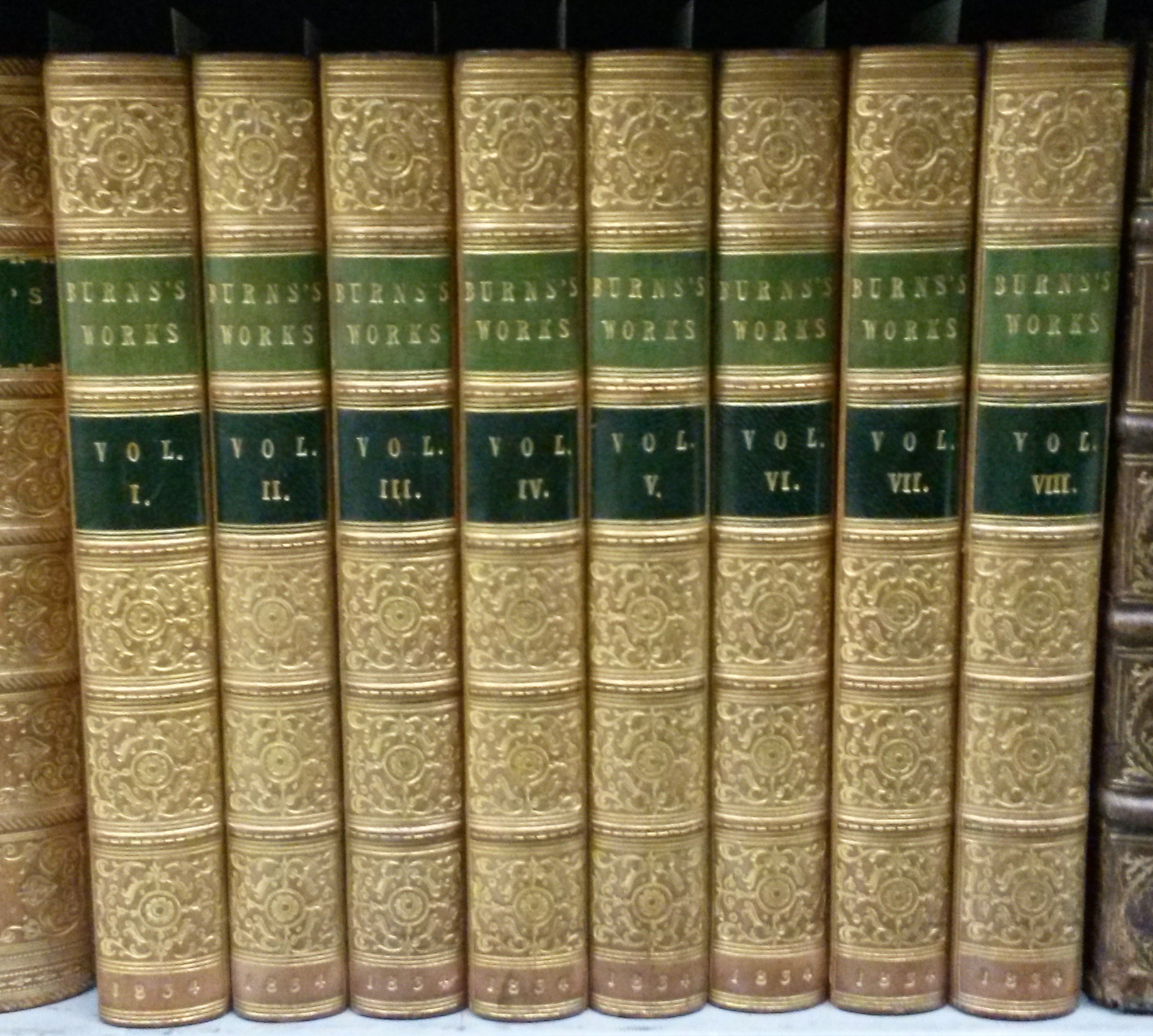
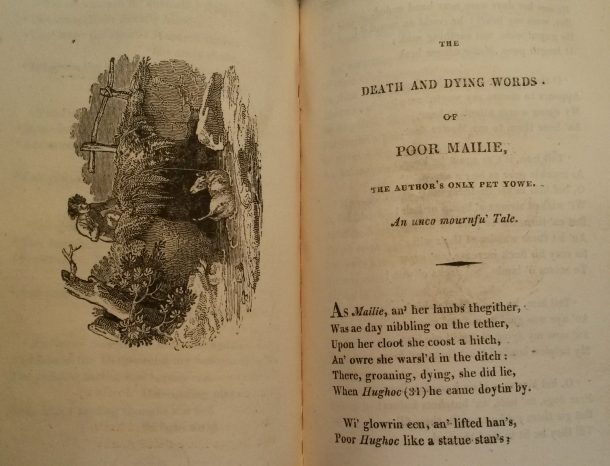
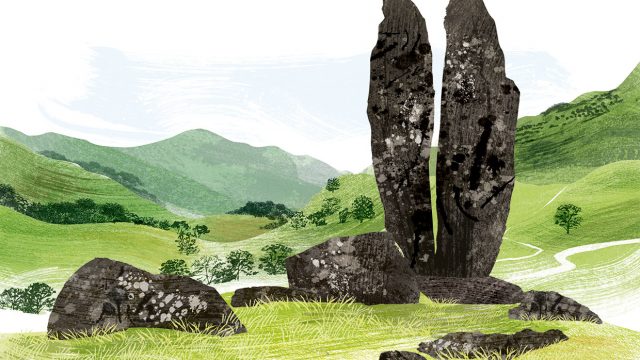
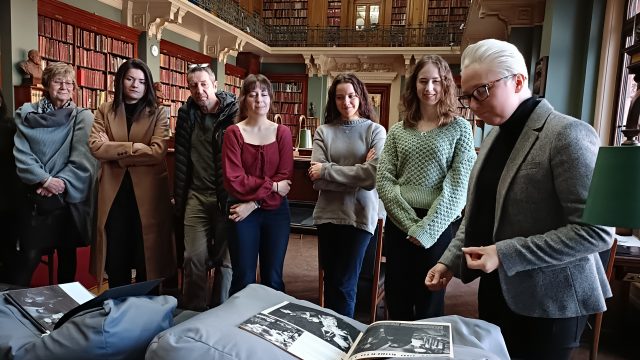
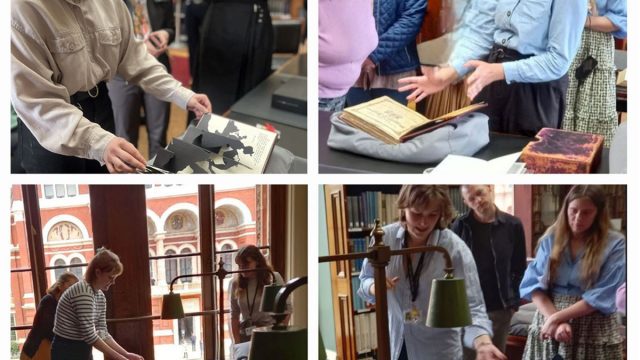
Thank you for this it’s good to share cultural events with the whole of the UK and the wider world